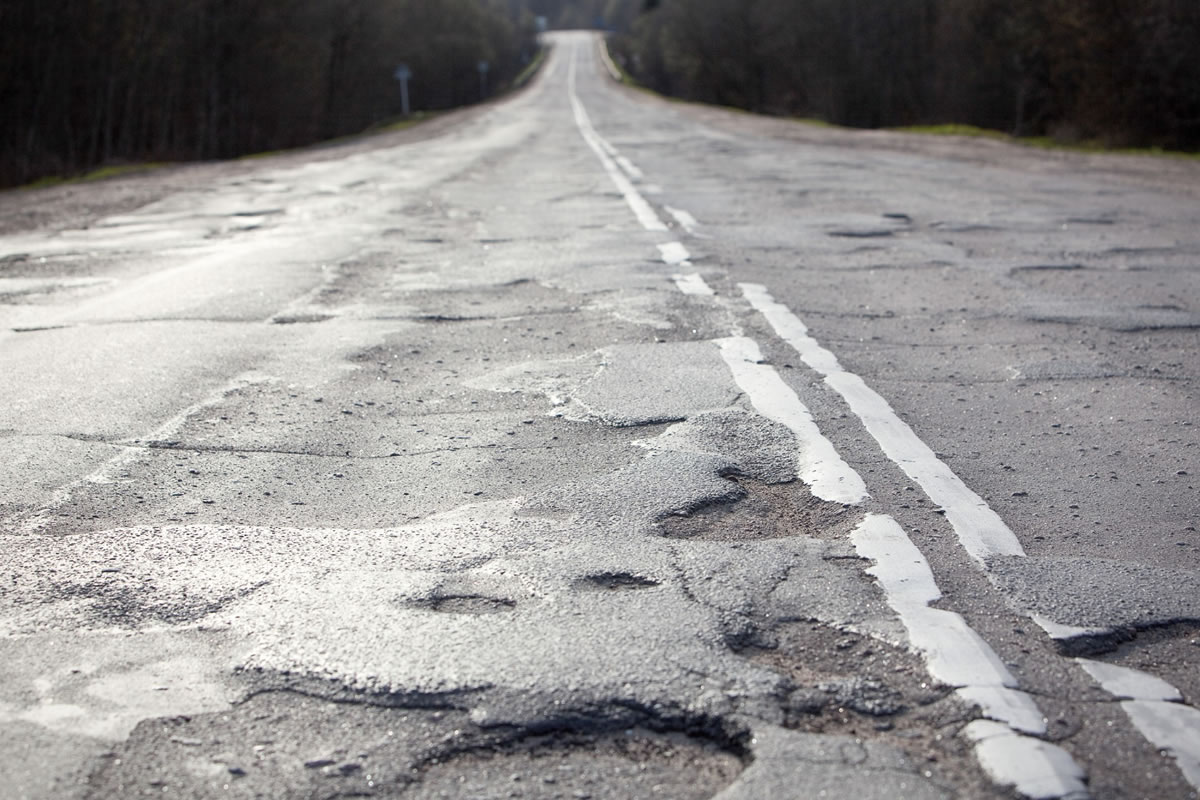Understanding Potholes

Asphalt can last between 15 and 25 years with proper, timely maintenance. However, when maintenance procedures are poorly performed, delayed, or neglected, it can lead to the development of potholes. Our experts on paving in Fredericksburg, TX, offer this information to help you better understand potholes.
Pothole causes
Potholes happen when the structural integrity of your pavement has been compromised. This is usually a result of water intrusion into the deeper layers of your pavement. Water will weaken your asphalt structure over time.
Asphalt pavement oxidizes as it ages and becomes brittle. This is normal. In addition, the brittleness in your paving will lead to surface cracks. This is also normal. These cracks will start off minor, but they will grow larger when left unaddressed. Heavy traffic patterns and weather elements can speed the cracking process, and during cold temperatures, cracks will continue to expand. When you neglect to repair cracks in your pavement, potholes can form.
Pothole formation
First, your pavement is exposed to damage. This may result from an unusual issue, like a car accident where a utility pole breaks and cracks your paving, but it is usually the result of aging and regular wear and tear. As we mentioned above, this process can be accelerated by neglected or poorly completed pavement maintenance. It leads to an opportunity for water to intrude into the deeper layers of the pavement's structure.
Once the moisture has breached the surface level, it will deteriorate the inner layers and weaken the structure's subbase and base levels. Then, if you live in more extreme climates, the moisture within your pavement will freeze and expand. Once temperatures increase, the frozen moisture within the subbase and aggregate will contract, leaving behind gaps in your pavement structure where the subbase and base no longer support the paving.
In many parts of the US, where temperatures fluctuate above and below freezing, this deterioration and weakening can repeatedly happen throughout the winter season. With each freeze/thaw cycle, your internal asphalt layers will continue to expand and contract and allow more water to intrude into the pavement. Each time this happens, the gaps in your pavement structure increase, and the deterioration expands.
This opens the door for much more significant issues. Eventually, the gaps in the structure allow the pavement surface to collapse into the space left behind from the freeze/thaw cycle. This is the beginning of a pothole. In addition, with this collapsed pavement, there is more opportunity for water intrusion into your pavement's structural levels, continuing and expediting the deterioration process. So, the small crack you neglected has created a minor pothole, which will lead to a more significant, more dangerous, and potentially costly pothole when left neglected.
Potholes are contagious, too. Once water finds its way into the deeper layers of your pavement, it continues moving through the internal structure. It further weakens the pavement structure underneath the pothole as it moves down. If it moves horizontally, it creates a broader area of the weakened pavement structure. While it is impossible to avoid pothole development altogether, you can delay it, restrict their expansion, and repair them as quickly as possible to prevent unnecessary costs for more extensive repairs and replacement in the future.
Contact us today for asphalt repairs and paving in Fredericksburg, TX. We are here to help!